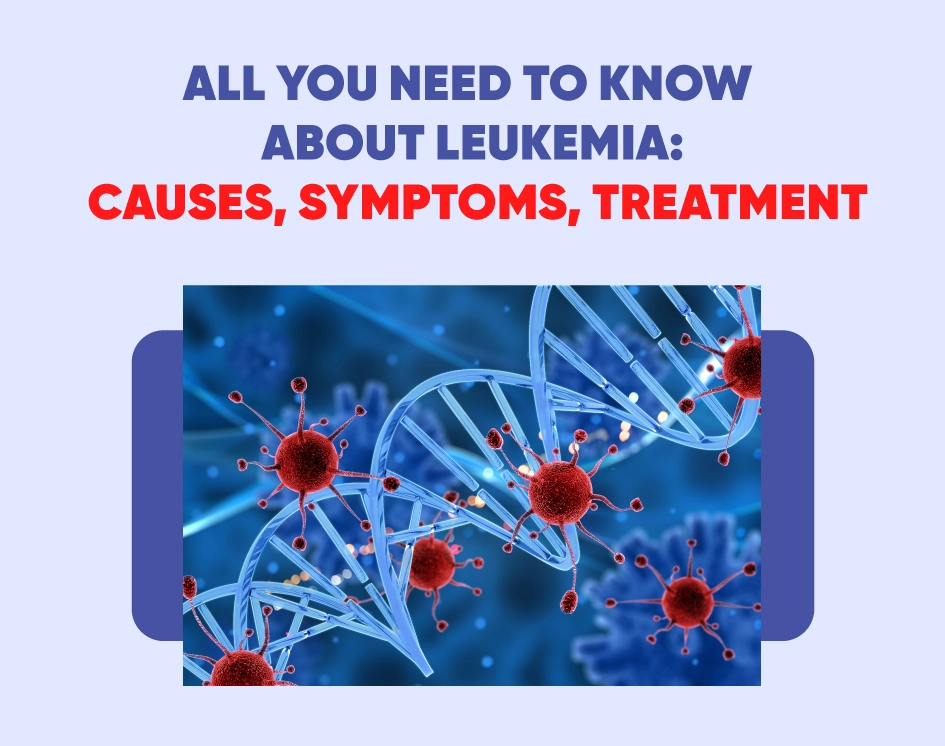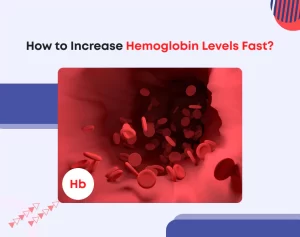
All you need to know about Leukemia: causes, symptoms, treatment
Leukaemia is a malignant systemic lesion of the red bone marrow during which healthy white blood cells in the blood are replaced by altered cells. Abnormal leukocytes do not function normally, yet they continue to divide, increasing their numbers. They infiltrate all blood-making areas of the body and injure their tissues as they travel through the blood. This sickness can be acute or chronic, affecting both adults and children. Men are one and a half times more likely than women to get leukaemia.
Types of leukaemia
According to the form of the course of the disease, leukaemia is divided into acute and chronic, and according to the source of malignant cells – into lymphoid and myeloid. Thus, there are 4 types of leukaemia:
- Acute lymphoid leukaemia (ALL);
- Chronic lymphoid leukaemia (CLL);
- Acute myeloid leukemia (AML);
- Chronic myeloid leukemia (CML).
Acute lymphoid leukaemia (ALL) is a type of blood cancer that is most common in children. A malignant alteration in lymphocytes (a kind of white blood cell) develops in this case.
CLL (chronic lymphoid leukaemia) is more frequent in adults over the age of 50. Lymphocytes are also impacted in this scenario. Simultaneously, the quantity of leukocytes in the blood increases rapidly, with lymphocytes accounting for up to 95% of the total.
Unlike ALL, the leukemic cells in this scenario are mature lymphocytes rather than blasts. CLL is commonly called a lymphatic system illness since it affects the lymph nodes. Chronic lymphoid leukaemia includes both prolymphocytic leukaemia and hair cell leukaemia.
Adults are the most commonly affected by acute myeloid leukaemia (AML). This illness is classified into numerous subtypes based on which cells begin to divide in an uncontrollable manner (for example, myeloblastic and monoblastic leukaemia).
CML (chronic myeloid leukaemia) is more frequent in adults over the age of 60. The amount of leukocytes in the blood is likewise considerably raised in this scenario, although these cells can only partially execute their jobs. Men are more likely than women to get any kind of leukaemia.
Why does the disease occur?
Currently, the cause of blood cancer is considered to be violations of the molecular structure in the chromosomes, which can occur under the influence of unfavourable external factors:
- Weakened immunity and severe viral diseases (in children, leukaemia often develops after the flu);
- Radiation, including high single doses of radiation, the use of radiation therapy, excessively frequent radiography;
- Constant contact with benzene and other harmful chemicals at work;
- Chemotherapy with drugs of the cytostatic group;
- Hereditary diseases associated with chromosomal pathologies, in particular, Down syndrome;
- Blood diseases;
- A hereditary factor in which an unstable genome is transmitted from parents to children;
- Excessive smoking or chewing tobacco.
At the same time, many patients did not have the listed factors, and many people who were exposed to these influences did not develop the disease. The age risk factor should be mentioned: blood cancer most often affects children under 15 years of age and people over 55 years of age.
How to recognize leukaemia at an early stage?
As the damaged white blood cell count climbs, the symptoms of leukaemia become more severe. The acute kind has obvious symptoms, but the chronic type may not develop for years. Common signs of blood cancer include:
- Unreasonably elevated body temperature;
- Profuse sweating at night;
- Constant weakness, fatigue, and decreased performance;
- Deterioration in appetite in general or in relation to individual products;
- Constant feeling of nausea and vomiting that does not bring relief;
- Causeless weight loss in a short period;
- Painful sensations in the joints and bone tissue, headaches that cannot be alleviated with conventional medicines;
- Uncoordinated body movements;
- The occurrence of severe shortness of breath even with small loads;
- The appearance of bruises and hematomas as a result of minor injuries;
- Profuse, long-lasting bleeding with minor skin injury;
- Nosebleeds, bleeding gums;
- A sharp decrease in immunity, as a result – frequent respiratory infections;
- The appearance of pain in one of the halves of the abdomen or in one hypochondrium, bloating;
- An increase in the volume of lymph nodes, especially located in the neck, under the armpits, and in the groin;
- Painful swelling of the groin;
- The appearance of fog before the eyes is due to violations of the structure of the fundus.
In acute leukaemia, symptoms appear quickly and worsen, and the body temperature rises to 39-40 °C. These leukaemia symptoms develop soon. Chronic instances have symptoms that gradually worsen over time. When the condition is progressed, severe symptoms appear. This includes blast cells spreading from the bone marrow. People can die as a result of severe internal bleeding, infections, and other complications.
How to identify the disease
A medical diagnosis of leukaemia includes, in addition to examining the patient, identifying his complaints and objective clinical manifestations of the disease, a number of laboratory and instrumental studies:
- A general blood test reveals an increase in the number of leukocytes and a decrease in the number of other types of blood cells;
- A coagulogram that registers a decrease in blood clotting;
- an oncohematological showing dysfunction of the immune system;
- cytogenetic and cytochemical studies;
- ultrasound examination of the affected organs;
- computed tomography;
- Magnetic resonance imaging.
In addition, the patient undergoes punctures of the bone, spinal cord, and lymph nodes for subsequent histological analysis, which allows you to determine the type of cell damage sensitivity to chemicals and identify other data.
Is it curable? What are the treatment options?
In the treatment of leukaemia, the prognosis depends on many factors – the form and nature of the course of the disease, the timing of detection, the degree of damage to internal organs, and the general condition of the body. The treatment prospects for adult patients older than 60 years and children older than 10 years are the least favourable, especially in the presence of complicating factors. In general, the disease responds well enough to therapy with modern means, which include:
- chemotherapy;
- radiation therapy;
- chemisorption;
- target therapy;
- bone marrow or donor stem cell transplant.
With the timely start of treatment in a specialized onco-hematological clinic, the prognosis is quite favourable, and doctors, in most cases, manage to achieve long-term remission or completely rid the patient of the disease.
Conclusion
Navigating the complications of leukaemia necessitates knowledge and quick response. From its beginnings to its symptoms, early detection is critical. Chemotherapy, radiation, targeted medicines, and transplants are all treatment approaches that can lead to remission. The prognosis is affected by a variety of factors, including age and health. Considering the importance of medical competence, getting professional advice is essential. The fight against leukaemia emphasizes the need for information, frequent health exams, and advances in medical technology.






